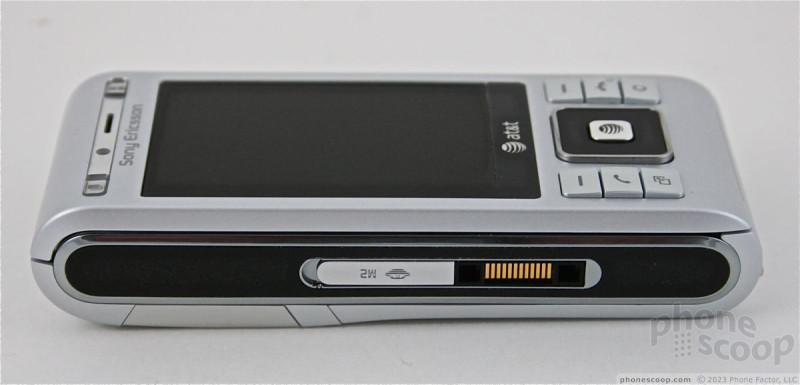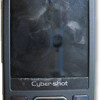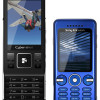Review: Sony Ericsson C905a
As far as modern cell phones go, the C905a is a bit on the thick side. There's an extra hump on the back surface to accommodate the camera module that adds to the phone's girth. It's chunky and blocky and fairly weighty, too. You are definitely going to notice this phone if you choose to put it in your pants pocket — especially if your pants require a crowbar to get into. It actually feels more like a camera than a phone when you hold it. I know that's hard to quantify, but that's the impression I come away with: camera first, phone second.
The exterior plastics felt a little bit cheap to me. Most of the back plate is plastic, except where the camera cover is. The sliding hatch that protects the camera and its frame are made of metal. The materials are nice, but there are two sharp edges that your fingers can get caught on from time to time. In order to use the camera, the cover needs to be opened. Because the hatch locks into place, it takes a bit of effort to open. I wasn't a fan.
The front panel has a large display and a cluster of control keys below it. The d-pad is square-ish and has a high rim on the outer edge. It has excellent travel and feedback in all directions, as does the center button. Flanking the d-pad are six keys, three on each side. On the left is the soft key, call key and app-switcher key (see the Menus section of this review). On the right are another soft key, the end key and the clear/back key. They all had good travel and feedback, but I thought it was hard to tell which was which when moving your thumb up or down the column of keys.
The slider mechanism is strong. It has a smart snap to it with the spring assistance, and locks firmly into both the closed and open positions. When up, you have access to the 12-key numeric keypad. The keypad is set about 2mm below a sharp ridge. You can't quite grate cheese with it (as with the Palm Pre), but it is sharp enough that it bugged me when I used the number pad. The keys themselves are mushy, and don't offer the best travel and feedback. There is a thin line between each row of keys to let you know you've passed from one to the next.
As for the rest of the hardware, the left side hosts the hatch covering the M2 memory card port and the Sony Ericsson proprietary accessory and data transfer port. On the right, you'll find the volume rocker at the top, below which is a photo gallery key, the camera key, and the camera shutter release key. The volume toggle has miserable travel and feedback, but the photo gallery and camera keys felt great — even if they were a bit on the small side. The presence of the camera key is a bit of a puzzler to me, because the camera shutter release key does the exact same thing — they both start the camera when pressed. Weird. The shutter release key is two-stage and each stage felt distinct.












 Sony Ericsson's CS8 Vaults FCC with T-Mobile 3G
Sony Ericsson's CS8 Vaults FCC with T-Mobile 3G
 Sony Ericsson Shows Off Two Camera Phones
Sony Ericsson Shows Off Two Camera Phones
 iPhone 15 Series Goes All-In on USB-C and Dynamic Island
iPhone 15 Series Goes All-In on USB-C and Dynamic Island
 iPhone 16 Brings More Features to All Price Points, Including New Camera Control
iPhone 16 Brings More Features to All Price Points, Including New Camera Control
 Sony Ericsson C905
Sony Ericsson C905








